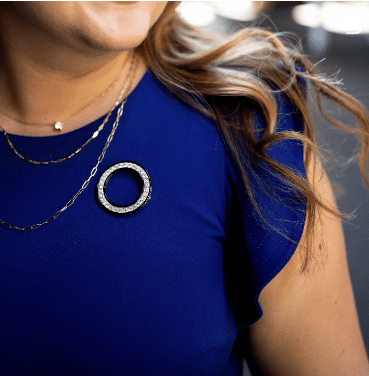By Donna Jolly, RJ, Director of Marketing, American Gem Society
About sixty years ago, the French academic René Girard introduced a radical theory that changed marketing as we know it. Girad proposed that human desire is not innate. Instead, we mimic the desires of others, often without realizing it. He called this idea “mimetic desire.”
Mimetic desire is a psychological behavior that can explain why we crave the latest gadgets, fashions, or experiences that our friends, celebrities, or influencers have.
Marketers have employed mimetic desire tactics in their campaign strategy for decades. With today’s social media saturation, it’s more predominant than ever.
In fact, you probably already use mimetic desire in your promotions. A deeper understanding of why it works can help you effectively strategize the execution of future campaigns. Here are some ways you may have used mimetic desire and ideas you can further implement.
Showcase people modeling jewelry. It’s done daily on social media: People wearing beautiful jewelry, whether by a celeb, influencer, someone on your team, or yourself.
Use a rich mix of photos, videos, testimonials, and reviews to display your jewelry on different models and highlight their stories and personalities.
Incorporating this principle of mimetic desire can help your clients feel part of a community of like-minded people who share their tastes and values.
Create scarcity and exclusivity. This strategy taps into a psychological phenomenon where individuals feel compelled to act swiftly, fearing they might lose the chance to own a truly unique and exclusive item.
When people feel like they might miss out on something, it creates an urgency that can motivate them to take action. For example, let’s say you are releasing a new jewelry line. You could generate a sense of scarcity by limiting the number of items you are selling or creating a waiting list for them. This builds the appearance of exclusivity, as clients would know that they are only one of a select few who will be able to purchase the rings.
For this marketing tactic, your messaging should use clear and concise language to communicate the limited availability of your product. Make sure you tailor messaging to help your clients feel they are part of an exclusive opportunity.
Leverage social proof. This tactic can be used to show potential clients that your jewelry is popular and well-received. You can do this by showcasing positive ratings, reviews, and testimonials from your existing clients.
Add a section on your website with customer reviews. Ask your clients to share their photos and videos of your products on social media. By demonstrating the positive experiences of existing clients, you can help to convince potential clients that your products are worth buying.
Inspire aspiration and transformation. In the world of mimetic desire, clients are more likely to want something if they think it will improve their lives or make them happier. Demonstrate how your jewelry can enhance your clients’ style, mood, and even confidence.
For example, while a customer is trying on a piece of jewelry, it’s common practice to show them a complementary piece, right? Say the customer is trying on a pendant on a long chain. You show them how it looks when paired with a shorter chain, creating a stacked look. Your goal is to help your clients envision how the jewelry can enhance their style. You are helping your clients tap into their desire for self-expression and their aspiration to improve their personal style.
Storytelling and emotional connections. By weaving compelling narratives around your jewelry, you can evoke emotions and create a connection with your audience.
Share stories of how your jewelry has brought joy to a customer, signified an achievement or symbolized love. Ask your clients to submit stories you can share at the counter or on social media. This allows your clients to imagine themselves experiencing similar emotions and desires.
You can also work with your AGS suppliers on telling the story behind their jewelry. They are as passionate about jewelry as you are; chances are, a piece of jewelry they created was born out of inspiration. Ask them why they designed a particular piece and share that story with your clients. The impact of such stories will extend far beyond the initial purchaser as your clients relay them to anyone who appreciates their jewelry!
Community engagement. Foster a sense of community and belonging among your clients by encouraging them to share their experiences, photos, and stories about your jewelry. Create a dedicated social media group where clients can connect and showcase how they incorporate your jewelry into their lives. This not only amplifies mimetic desire but also strengthens brand loyalty.
While mimetic desire can be a helpful marketing tool, maintaining authenticity and transparency should be at the forefront of marketing practices. For instance, if you are going to share a customer’s story, make sure you have their permission or say you’d like to share it but not mention their name. Striking a balance between leveraging mimetic desire and adhering to ethical standards is vital for creating responsible marketing campaigns.
Mimetic desire is not a new concept but has become more relevant and pervasive in the digital age. Understanding and effectively—and ethically—utilizing mimetic desire in your marketing strategy can help you establish a strong emotional connection with your audience, which can drive customer engagement and boost sales for your business.

